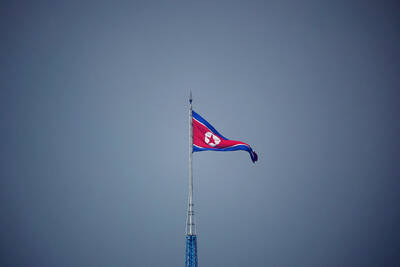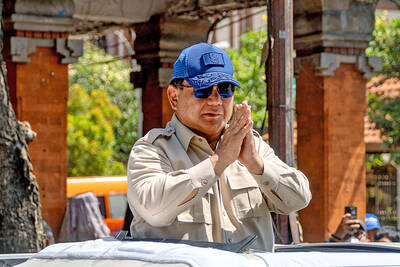They were hopelessly outnumbered, but even then the Greeks knew it would be the battle that could change history.
The Asian invaders, had entered the Aegean. The "comeliest of boys" had been castrated; the throats of the "goodliest" soldiers ripped out.
Mounted on his marble throne Xerxes, Persia's formidable warrior king looked over the bay of Salamis, confident that he was about to enslave Europe. But instead of victory came defeat.
As the Greeks' triremes trapped the Asian fleet, smashing it with their bronze rams, Xerxes watched incredulously. His soldiers, he said, were fighting like women.
That was 480 BC. Nearly 2,500 years later, the quest to better understand the battles that the victorious Greeks would see as a defining point in their history has reached new heights, as experts Sunday began searching for the lost fleets of the campaign in the northern Aegean.
In the world of underwater archaeology the hunt for the legendary armadas is the expedition that might, just, scoop all others.
Topping the international team's wish-list is the remains of a trireme, the pre-eminent warship of the classical age.
"This is high-risk archaeology," says Shelly Wachsmann of Texas A&M University, the team's co-leader. "Discovering a trireme is one of the holy grails. Not one has ever been found."
The Persians' defeat at Salamis is seen as one of the first victories of democracy over tyranny, a crucial moment in Western history.
Without it, say academics, there would have been no Golden Age and the world would have been a very different place.
All of which makes this week-long mission more poignant as experts try to find out how the Greeks managed to defeat a much bigger and better-equipped enemy.
Although archaeologists have discovered ancient Greek and Persian ships, they have always been cargo vessels.
For their guide around three of the five sites where Persian and Greek vessels are believed to have sunk -- the Magnesian coast of Thessaly, Artemision in northern Euboea and the "hollows of Euboea" -- the scholars have Herodotus.
Known as the father of history, the 5th century BC historian chronicled the wars in his masterpiece, The Histories. However, although his story is a good read, few artifacts have emerged to support it.
"This is a reversal of how we usually work, in that we know the history but lack the physical evidence," says Katerina Delaporta who heads Greece's Ephorate of Underwater Antiquities and is also co-leading the project.
Previously, she said, the search would have been impossible because of the technical requirements involved. With the passage of time and the Aegean's unpredictable weather conditions, maritime experts believe the wrecks will be buried under mud and silt. That means surveying the seabed at depths of up to 600m where visibility is limited. Among the team's state-of-the art equipment are sonar scans, a two-man submersible and a remote-operated vehicle capable of sending video messages to the surface.
"This is the first time such sophisticated technology is being employed," Delaporta said.
More than 1,000 of the three-tiered triremes participated in the second Persian war.
But while ship sheds and dry docks have been unearthed, scholars have had to make do with images of the galley on pottery. The discovery of a trireme, either Greek or Persian, would not only unravel the mysteries of antiquity's greatest fighting vessel but shed light on the civilization.
"Ships throughout time are among the most complex artifacts that any culture creates," Wachsmann said.
Although the sea is more difficult to explore, it has the benefit of preserving artifacts better than if they were on land. Among the assembled geologists, archaeologists, historians and oceanographers there is no doubt that the ancient shipwrecks exist.
"It's just a question of finding them," said Stefanie Kennell, the director of the Canadian Archaeological Institute.
Because triremes had very little ballast, and when destroyed were unlikely to sink but float, archaeologists have long debated the likelihood of finding one. Most have set their hopes on finding a bronze ram, or the arms and armor that went down with the crews.
"If we can find part, or even the metal fittings of a trireme, it would add immeasurably to our knowledge of military seafaring in the early 5th century BC," Kennell said.
In an earlier attempt to find the lost Persian fleet of the first Persian war -- wrecked off Mount Athos in a storm in 492 BC -- the searchers discovered two helmets and a bronze-tipped spear butt.
But around Mount Athos, the waters were much deeper.
"The chances of making more finds are higher," Delaporta said.
The big prize - -- Salamis -- has been left for now. But time, she says, is of the essence. With the technological advances a new kind of menace has arrived -- looters, rushing to beat the academics to the ancient wrecks.

DEADLOCK: Putin has vowed to continue fighting unless Ukraine cedes more land, while talks have been paused with no immediate results expected, the Kremlin said Russia on Friday said that peace talks with Kyiv were on “pause” as Ukrainian President Volodymyr Zelenskiy warned that Russian President Vladimir Putin still wanted to capture the whole of Ukraine. Meanwhile, US President Donald Trump said that he was running out of patience with Putin, and the NATO alliance said it would bolster its eastern front after Russian drones were shot down in Polish airspace this week. The latest blow to faltering diplomacy came as Russia’s army staged major military drills with its key ally Belarus. Despite Trump forcing the warring sides to hold direct talks and hosting Putin in Alaska, there

North Korea has executed people for watching or distributing foreign television shows, including popular South Korean dramas, as part of an intensifying crackdown on personal freedoms, a UN human rights report said on Friday. Surveillance has grown more pervasive since 2014 with the help of new technologies, while punishments have become harsher — including the introduction of the death penalty for offences such as sharing foreign TV dramas, the report said. The curbs make North Korea the most restrictive country in the world, said the 14-page UN report, which was based on interviews with more than 300 witnesses and victims who had

COMFORT WOMEN CLASH: Japan has strongly rejected South Korean court rulings ordering the government to provide reparations to Korean victims of sexual slavery The Japanese government yesterday defended its stance on wartime sexual slavery and described South Korean court rulings ordering Japanese compensation as violations of international law, after UN investigators criticized Tokyo for failing to ensure truth-finding and reparations for the victims. In its own response to UN human rights rapporteurs, South Korea called on Japan to “squarely face up to our painful history” and cited how Tokyo’s refusal to comply with court orders have denied the victims payment. The statements underscored how the two Asian US allies still hold key differences on the issue, even as they pause their on-and-off disputes over historical

CONSOLIDATION: The Indonesian president has used the moment to replace figures from former president Jokowi’s tenure with loyal allies In removing Indonesia’s finance minister and U-turning on protester demands, the leader of Southeast Asia’s biggest economy is scrambling to restore public trust while seizing a chance to install loyalists after deadly riots last month, experts say. Demonstrations that were sparked by low wages, unemployment and anger over lawmakers’ lavish perks grew after footage spread of a paramilitary police vehicle running over a delivery motorcycle driver. The ensuing riots, which rights groups say left at least 10 dead and hundreds detained, were the biggest of Indonesian President Prabowo Subianto’s term, and the ex-general is now calling on the public to restore their